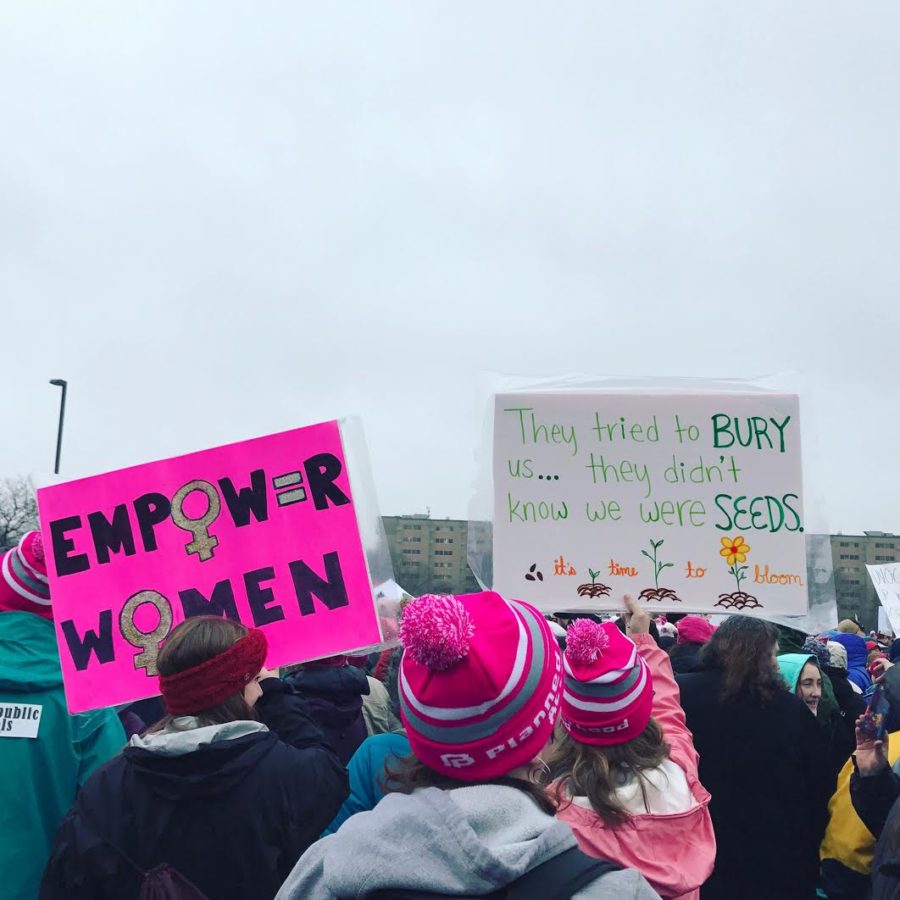St. Paul Women’s March rallies 100,000 participants
Mar 9, 2017
Over 100,000 protesters gather at the State Capitol in St. Paul. The next march will take place on March 8.
On Jan. 20, President Donald Trump took his oath to be sworn into office while millions of protesters prepared to take to the streets the following day to project their disapproval.
Women’s marches took place in 600 cities throughout the United States the day after Inauguration Day.
It was not only women that assembled but husbands, brothers and fathers also gathered to show their support for gender equality. According to data collected by the University of Denver and the University of Connecticut, an estimated 4.2 million took part in the protests.
“I would say that kind of march doesn’t have much of an impact if no men came and if no white privileged women went,” said Katie Donovan, senior.
Donovan and Maggie Cleary, senior, were two of the many HHS students to get involved in the Women’s Marches.
“The march was unlike anything I had ever experienced,” Cleary said. “It was a strange but powerful feeling to not know anyone there, but know you all were standing together.”
637 protests were held worldwide, all the way from the US embassy in Mexico to Antarctica. Although news channels in the U.S. were focused on Washington D.C., the first major protest of the day was held in Sydney, Australia. Nearly 5,000 joined in on the march in downtown Sydney. One of the many historic marches took place at the Minnesota State Capitol in St. Paul.
“I took the green line there, and I think it took eight of those trains before I could even get on,” Donovan said. “It was so crowded.”
According to the Pioneer Press, it was estimated that the event was the second largest event in St. Paul’s history. It was expected that the crowd at the capitol would be around 20,000 people. By the end of the day, St. Paul police officials estimated the crowd grew to 100,000. It would take two U.S. Bank Stadiums to seat all of the people who attended the march in St. Paul.
Because of the unexpected large turnouts, the march turned into an in-place demonstration due to the lack of space to move.
The organizers of the Women’s Marches throughout America are planning a second event because of the march’s mass popularity. The second event’s date has not been announced by the march’s leadership team.
“I realized that as a white woman I don’t have much to lose with what’s going on in our government,” Donovan said. “I realize that a lot of women, especially minority women are hurt and will be hurt because of what’s going on especially if we just ignore and accept the changes.”
The second event has been titled “ A day without a Woman” and was announced to be a general strike. Details have yet to be announced.
“We needed to come together and speak out against what’s going on together,” Donovan said. “The effort for equality didn’t stop after the marches. There has to be a lot more effort to make a change.”
Although it is named the Women’s March, the leadership team has stated that they are also fighting for protection of minorities, education, environmental protection and healthcare.
“Just a few hours marching at the Capitol building could rewrite history,” Cleary said. “I can’t see a reason to not be apart of that.”

